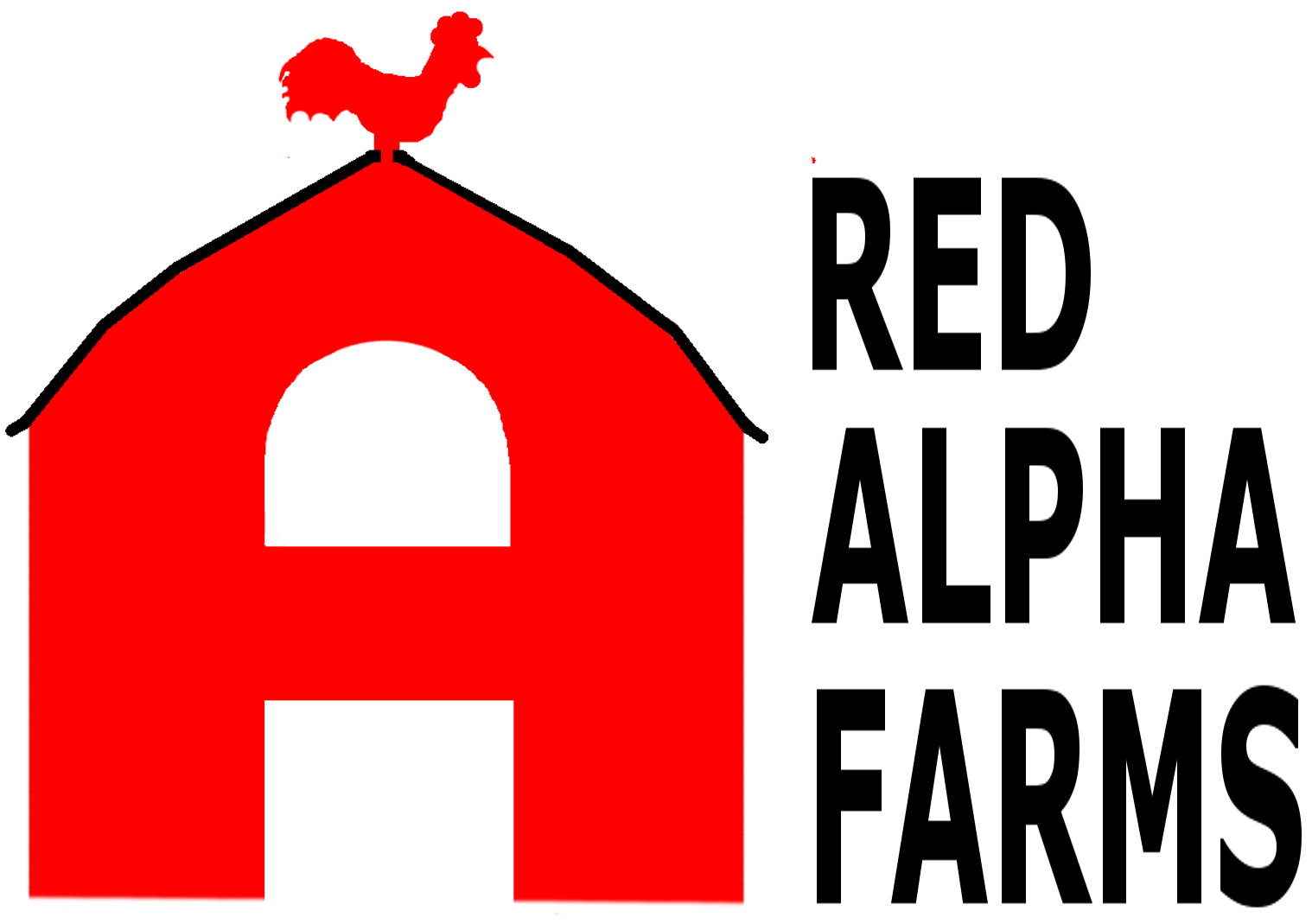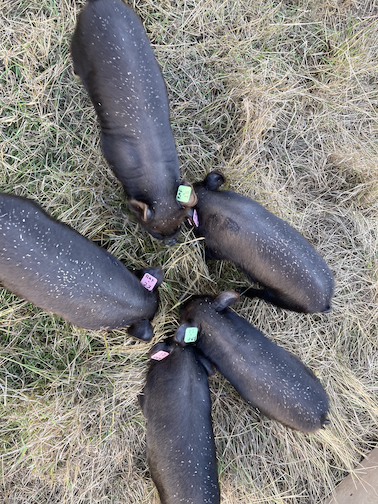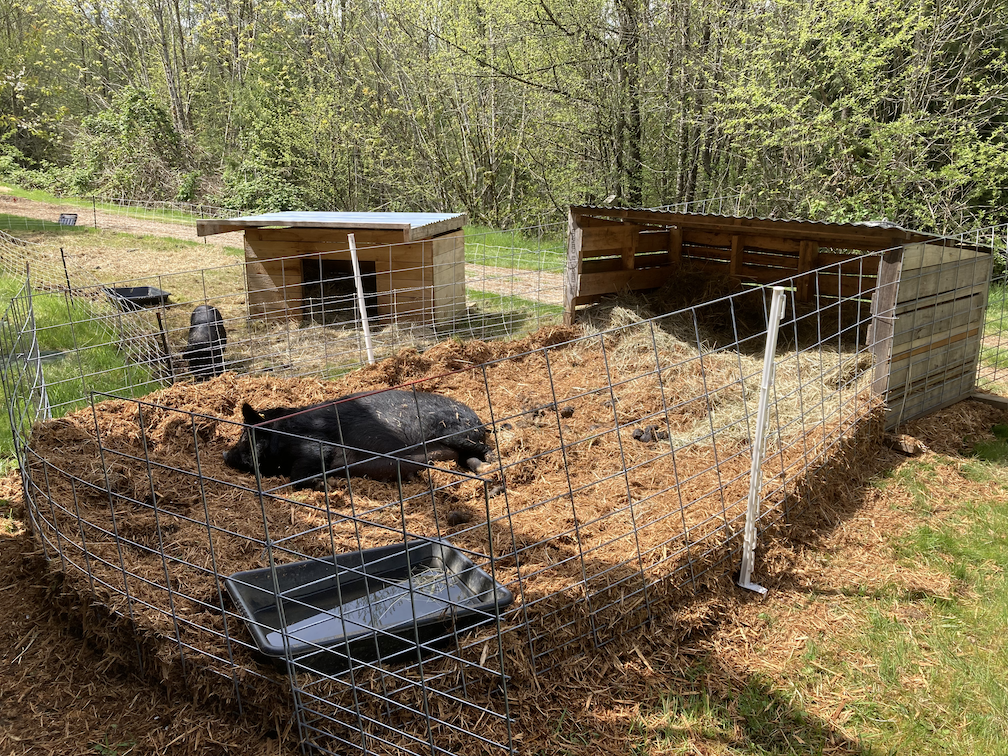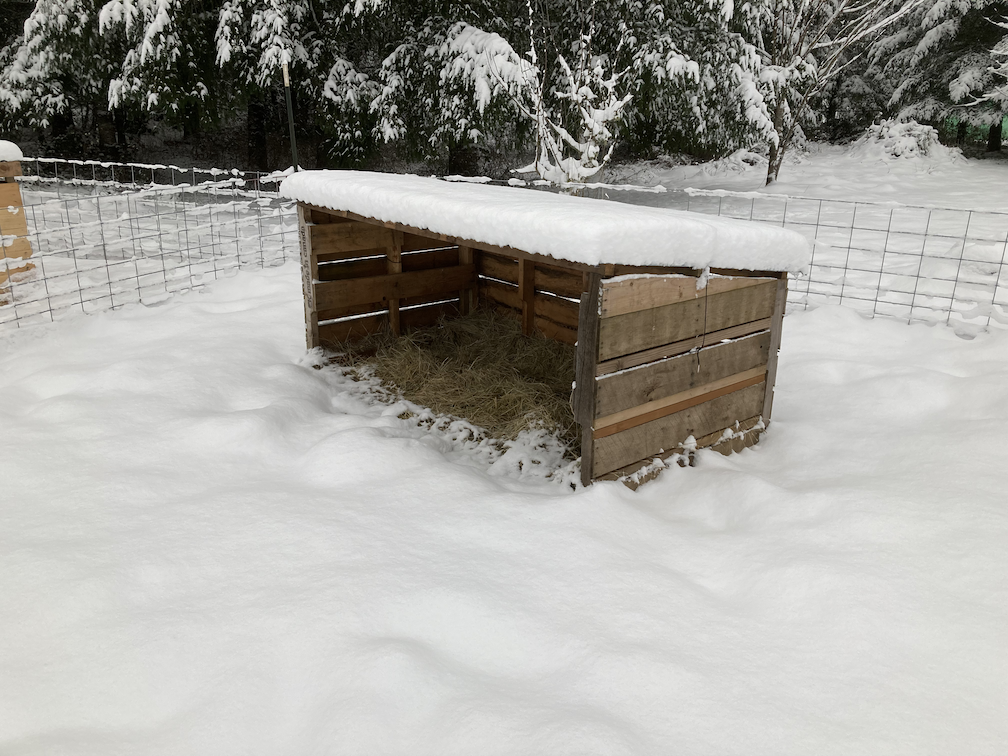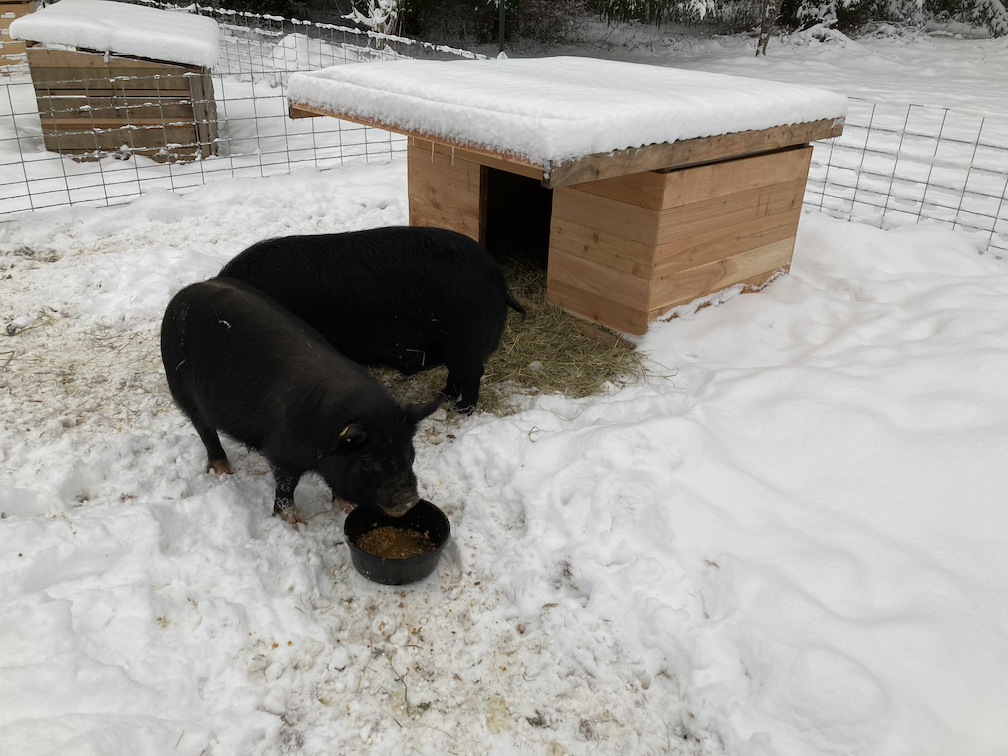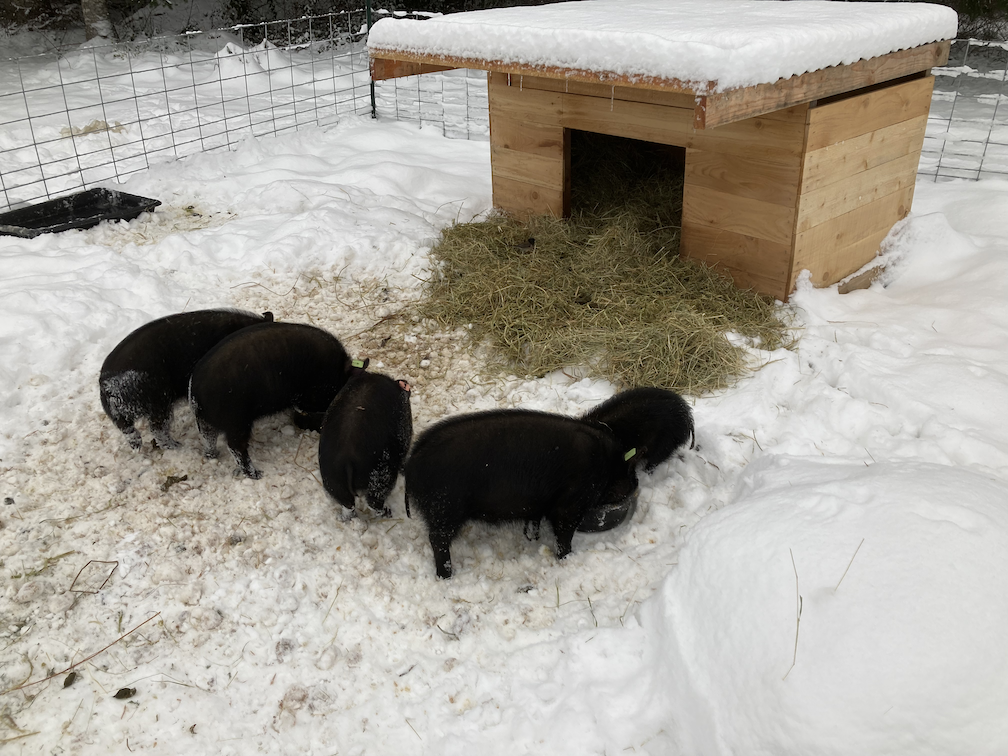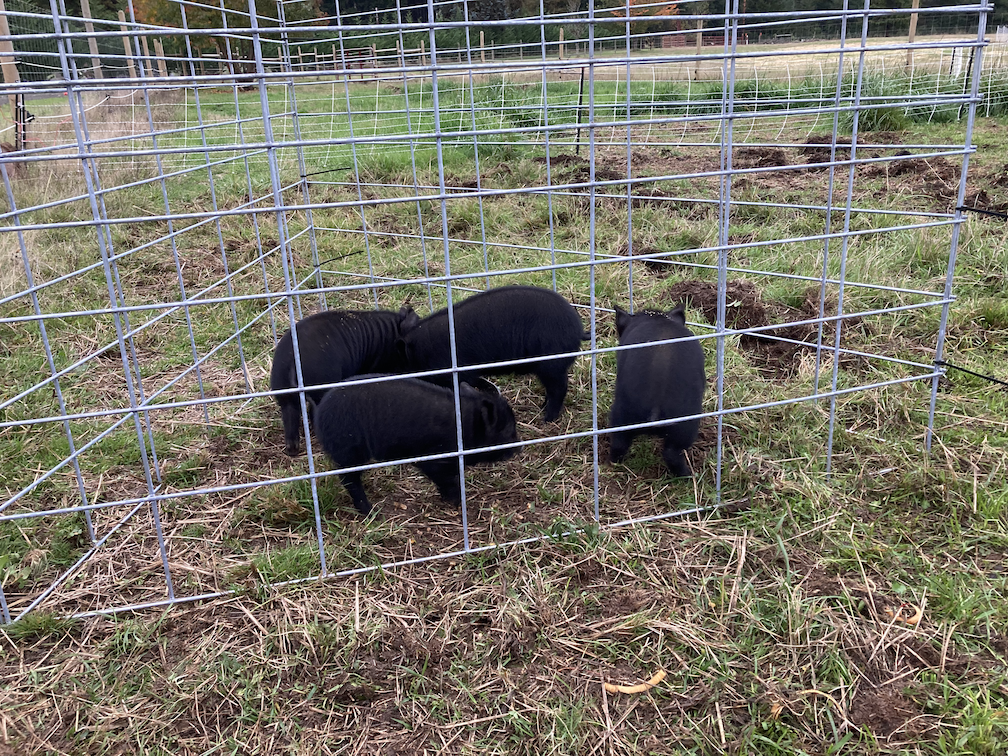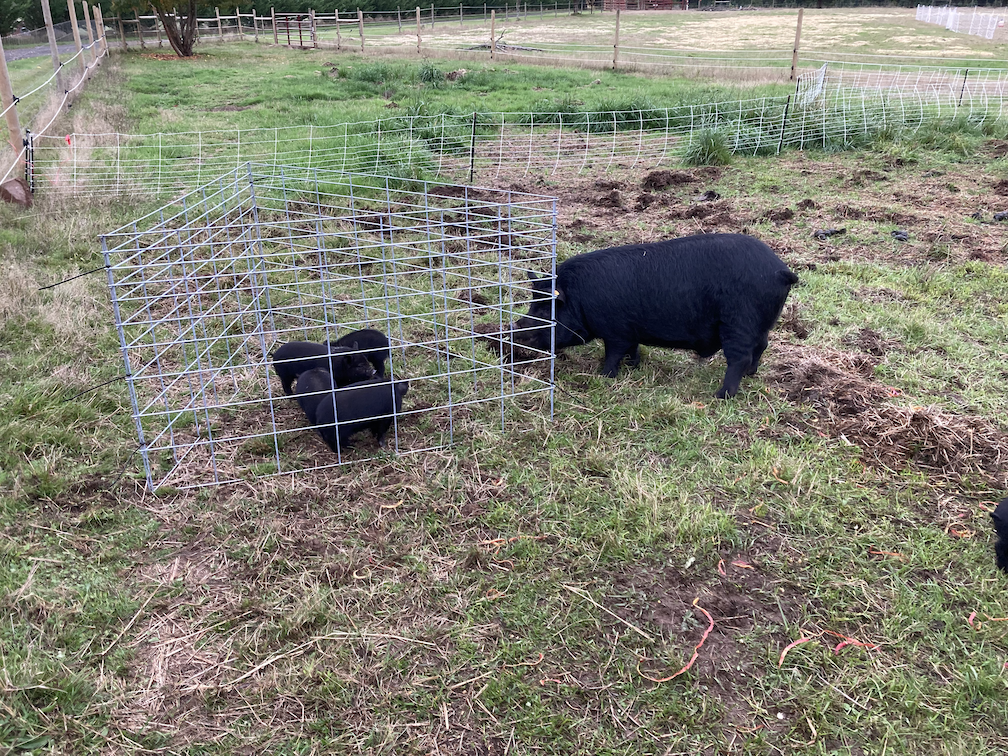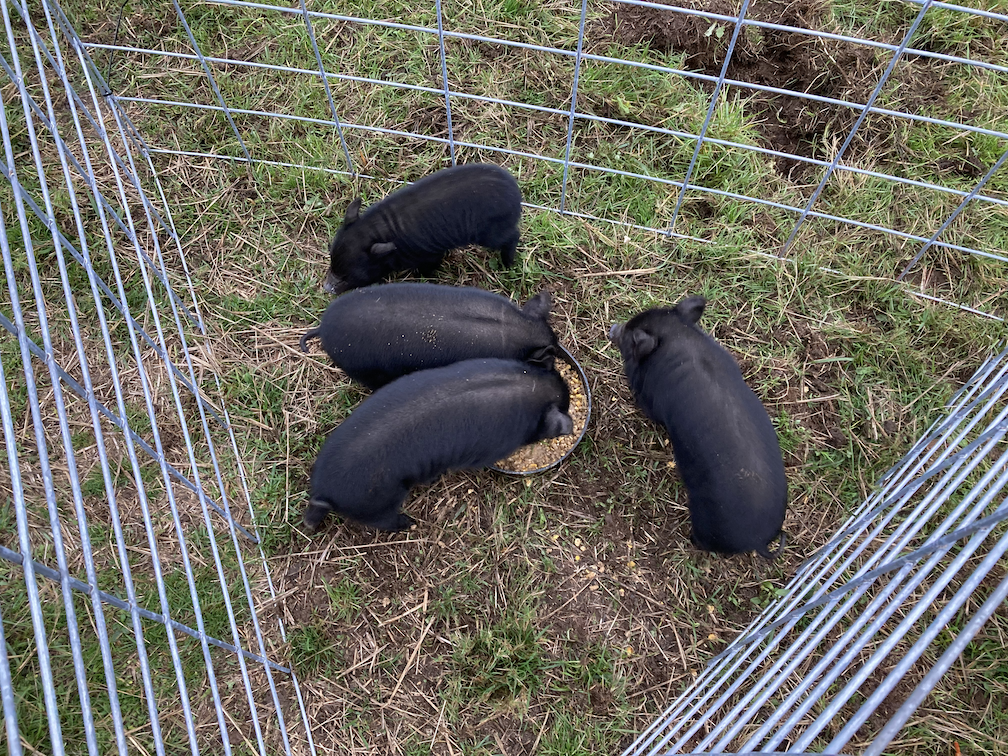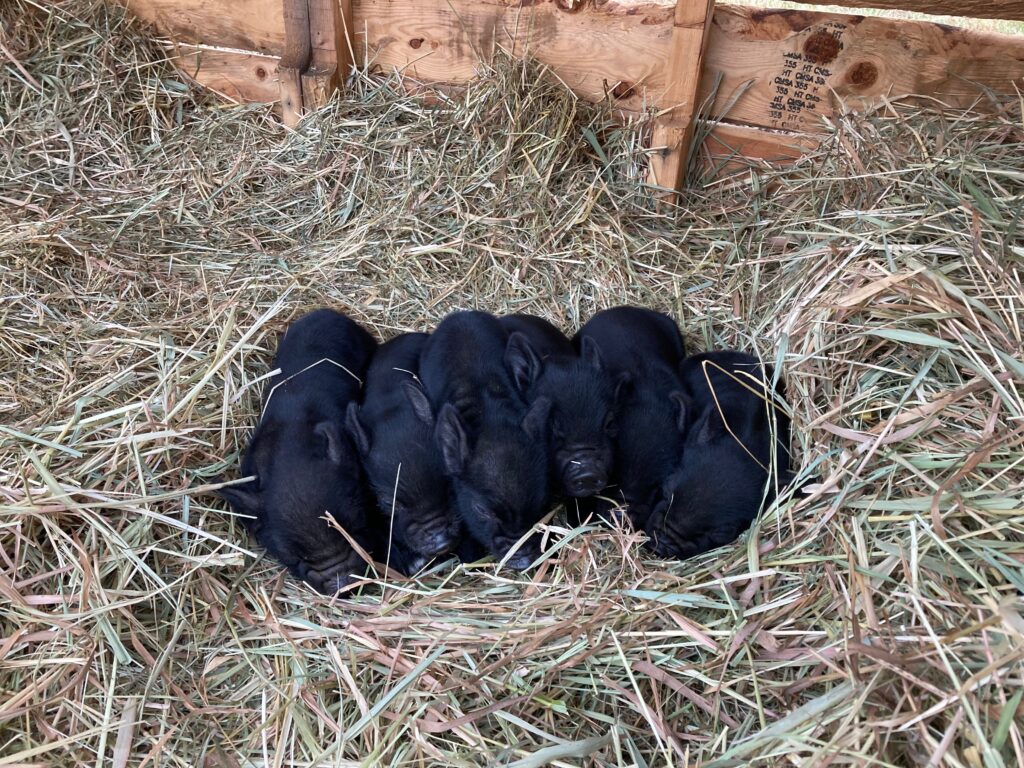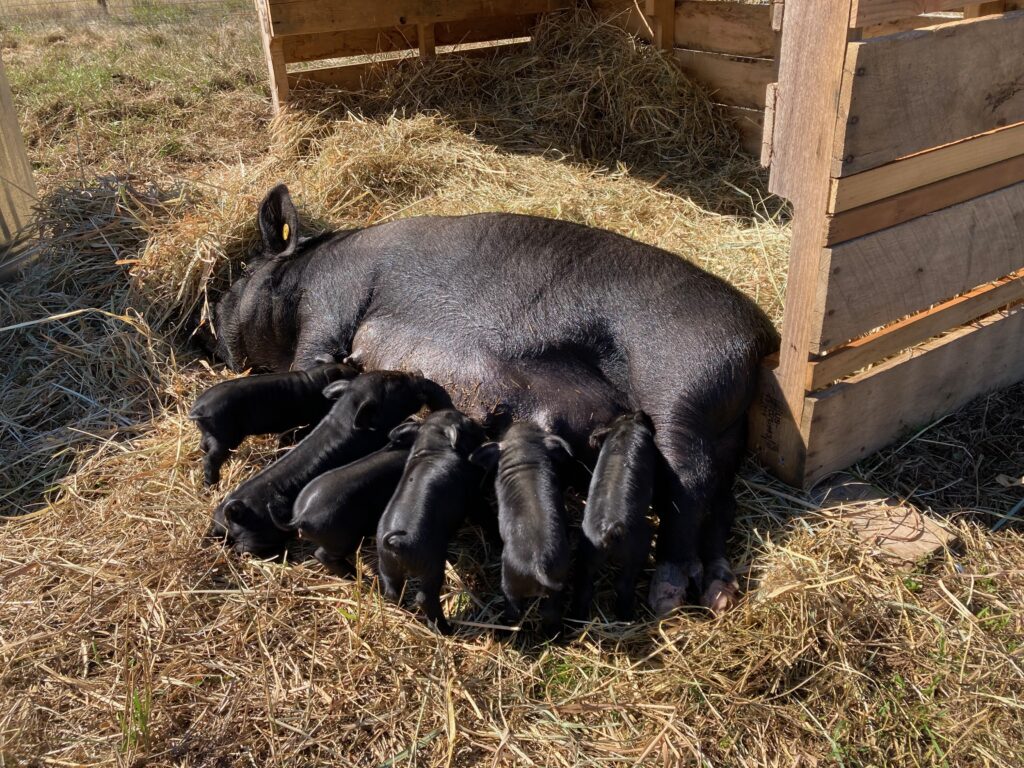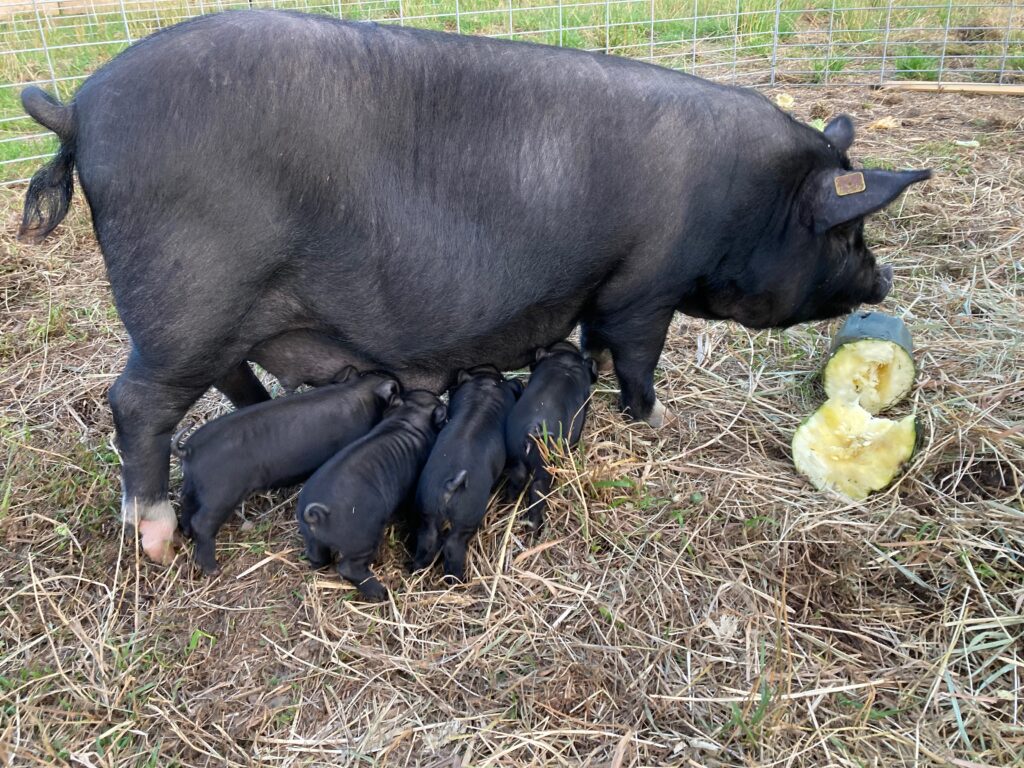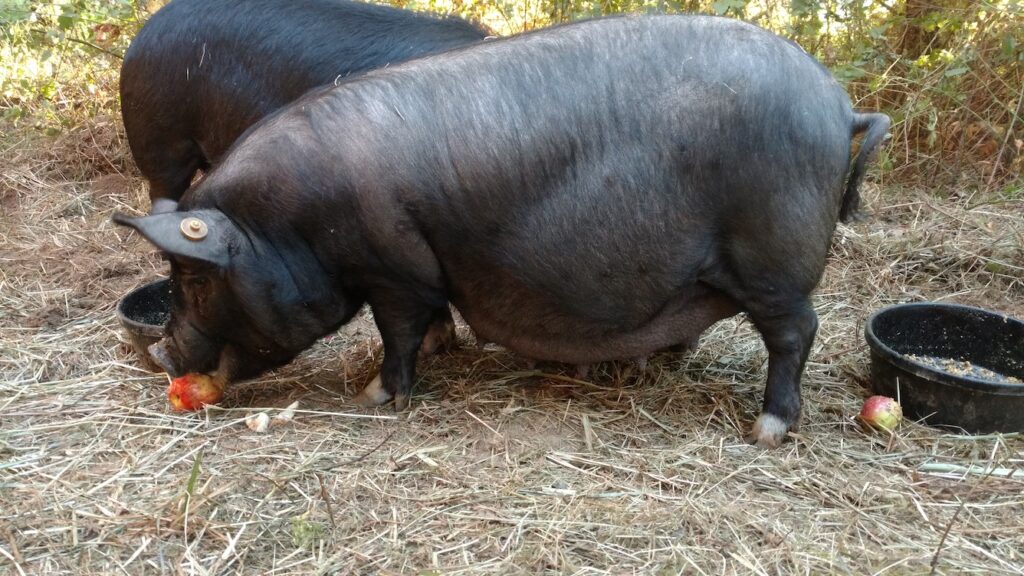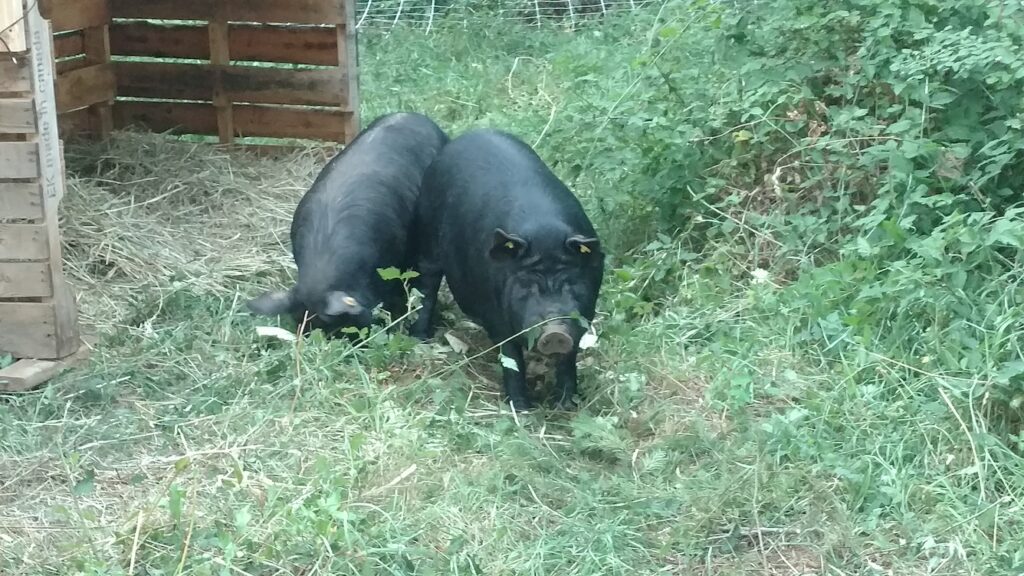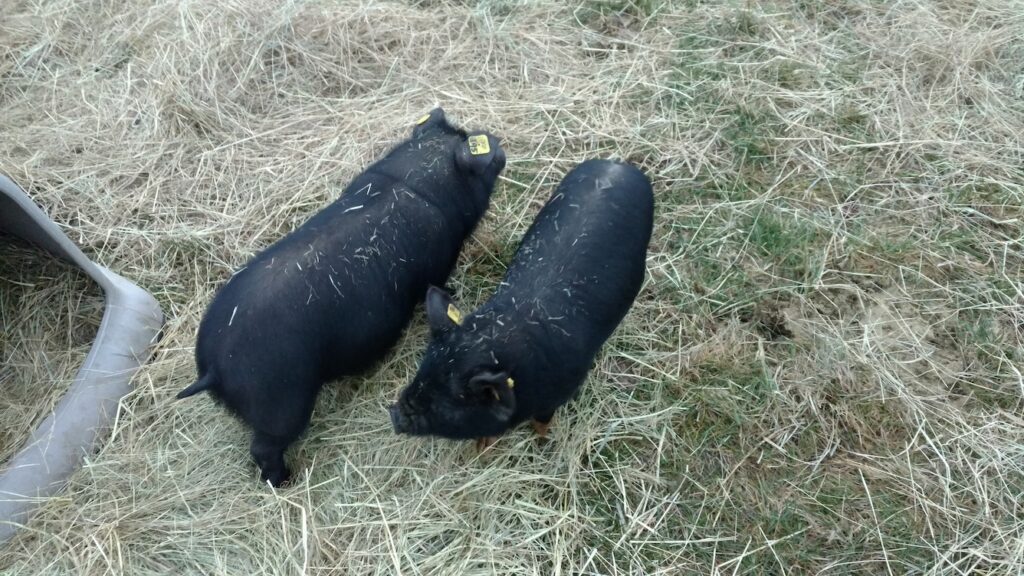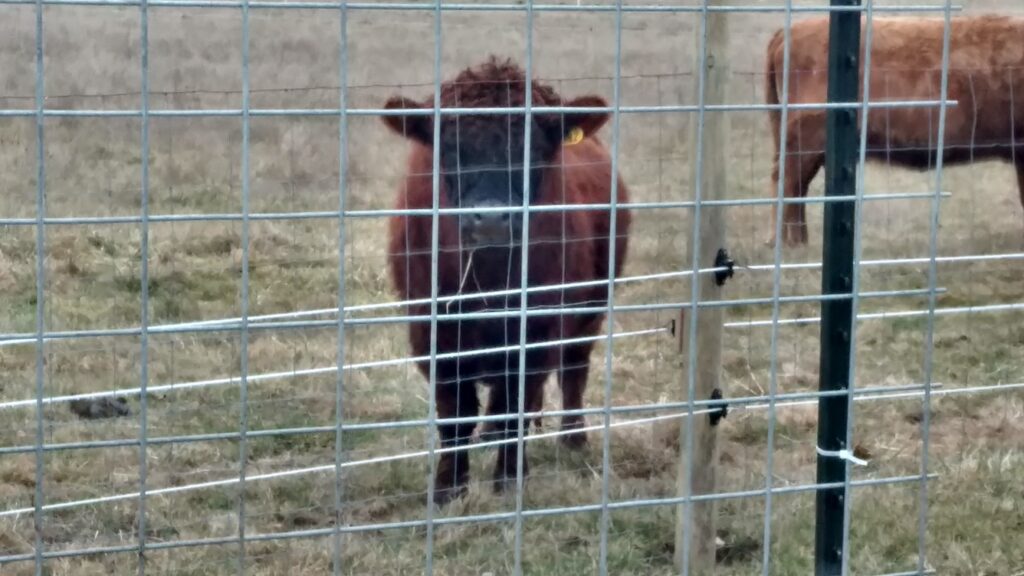American Guinea Hogs are said to have an average litter size of 6. I’ve been struggling with very low litter sizes – my average is closer to 3 for several years. There are many purported reasons for this, and I haven’t tried all of the supplied solutions. I was able to get a sow to go from a litter of 3 to a litter of 7 recently using copper sulfate as a feed supplement and an increased ration while in with the boar.
Copper sulfate has been used in hogs to increase feed efficiency, manage internal parasites, and increase fertility. Lately, I have been experimenting with this supplement for all of those reasons. My experiment is still relatively young, as far as breeding programs go, but so far it has been incredibly successful.
As far as supplementation goes, I buy feed grade copper sulfate from Concentrates NW in Oregon and feed half a teaspoon for each pound of feed that I give the hogs. I arrived at this dosage from an article that I read on the NIH website talking about increasing feed efficiency for hogs.
The second thing I changed was to significantly increase the ration given to the boar and sow while together. My theory is that if times are tough, they will have fewer offspring to increase the potential survival of the few they do have vs having a large litter and having to maintain milk and resources to feed the larger litter.
While the sow was in with the boar, I doubled the ration they would normally get. I feed my hogs on the lighter side, trying to keep them trim most of the time. My 3 year old boar gets an average of 3/4 – 1lb each day of grain, along with a few flakes of quality grass hay, and any other scraps we happen to have (or fallen fruit in the fall).
The other great benefit to copper sulfate is the internal parasite control aspect. I really hate to treat the animals with wormers and parasite medicine, but I will do it to keep their health if I have to. Using copper sulfate has eliminated the need to worm. I have tested this out by using it for months and then using a wormer on a group of hogs to test. Normally, I would see worms come out in the manure when doing this. During this test, I was not able to observe any worms in the manure after having used copper sulfate for months.
While it’s still far to early to say what I have done is the cause, I will continue to supplement and hope to see all of my sows litter sizes increase to 6+ over the next couple of years. Please note that I have only had 1 litter so far during this program, so don’t take this as success and be cautious in your own supplement program.
